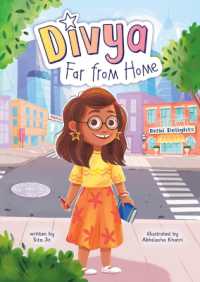Full Description
How can I help my youngest students become writers? How can I establish a routine for writing in my classroom?
Why is making books developmentally appropriate?
In Lisa Cleaveland's classroom, writing workshop is a time every day when her students make books. Katie Wood Ray guides you through the first days in Lisa's classroom, offering ideas, information, strategies, and tips to show you step by step how you can launch primary writing workshop with beginning writers.
If you're a new teacher or new to writing workshop, A Teacher's Guide to Getting Started with Beginning Writers will show you in clear and simple terms what to do to establish a routine for writing in your classroom, offering you vision, insight, and practical support. If you're an experienced workshop teacher, Katie and Lisa will help you imagine new possibilities.
SamplesPreview sample pages to A Teacher's Guide to Getting Started with Beginning Writers. About the seriesThe Classroom Essentials series was created to provide pre-service and veteran teachers with a fresh new look at foundational, student-centred practices. Each book in the series focuses on one essential practice, along with all the information you need to get started trying it - or refining it - in your own classroom right away. With highly visual designs, classroom videos, online resources, teacher tips and more, Classroom Essentials books offer a uniquely engaging and contemporary reading experience for today's busy teachers.
Contents
Welcome: A PLACE FOR CHILDREN TO MAKE BOOKS
Why Make Books?
What Writers Need to Get Started
Learning Through Language, Learning About Language
Beliefs Guide Actions
Day 1: INVITE CHILDREN TO GET STARTED
Helping Children Understand Time That's Governed by Purpose
The Difference Between Writing as Process and Writing as Procedure
Questions to Help Children Think About People Who Make Books
Picturing Writers at Work
Planting Seeds of Teaching as you Share Children's Finished Books
Deciding Who Will Share at the End of Writing Workshop
Telling Stories of Process
Big Ideas and Teaching Possibilities
Day 2: NAME CHILDREN'S ACTIONS AS PROCESS
Questions That Believe Children Into Being
Understanding What it Means to Be Finished
Three Key Reading Strategies for Beginning Writers
Valuing Children's Long, Slow Work on a Book
Recognizing Children's Actions as Writing Process
Big Ideas and Teaching Possibilities
DAY 3: SET EXPECTATIONS FOR PICTURES AND WORDS
Positioning Children So They're Willing to Try Writing Words
Narrating Your Actions to Show Children How Written Language Works
Composing with Words Involves a Lot More Than Just Spelling
Embedding Teaching Points in Your Authentic Talk with Children
Embedding Big Ideas About Texts
Embedding Big Ideas About Process
Embedding Big Ideas About What it Means to Be a Writer
Resisting the Urge to Overteach
Maintaining Children' Confidence Once They Start Writing Words
A Problem with Dictation
Big Ideas and Teaching Possibilities
DAY 4: OFFER CHILDREN STRATEGIES FOR WORD MAKING
The Typical Range of Word-Making Development
Expanding the Definition of Reading (To Make Sense of Beginning Writing)
The Usefulness of Alphabet Charts
Strategies for Word Making
The Importance of Noticing and Naming - And What to Notice
Why Young Children Need to Talk During Writing Workshop
Editing Possibilities for Beginning Writers
Big Ideas and Teaching Possibilities
DAY 5: SHOW CHILDREN HOW TO MANAGE BOOK MAKING OVER TIME
What Happens When Writers Reread
Pictures First or Words First?
Deciding When a Book is Finished
Teaching Children to Read Their Books
Learning About the Writing Process in the Context of Illustrations
Typical Development as Children Learn to Keep Their Meanings Consistent
Big Ideas and Teaching Possibilities
DAYS AFTER: SUPPORT CHILDREN IN THE EARLY WEEKS OF SCHOOL
Sharing Finished Books
Encouraging Fearless Spelling
Embracing Different Writers' Processes
Illustrating with Intention
Managing Ongoing Work
Celebrating Growth Over Time
When the Camera Shuts Off








